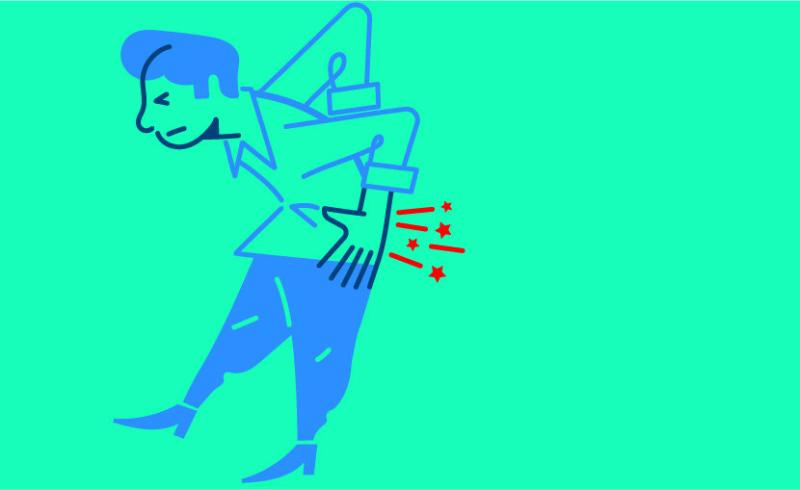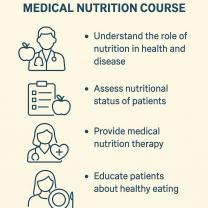What could cause right side pain radiating into your back?
Right side pain radiating into the back can be caused by a variety of factors, ranging from minor muscle strains to more serious medical conditions. Here are some of the possible causes:
Muscle strain or sprain: Muscle strains and sprains are the most common causes of back pain. They can occur due to overuse, lifting heavy objects, or sudden movements. The pain is usually localized to the affected muscle or ligament, but it can sometimes radiate into the back or other parts of the body.
Kidney stones: Kidney stones are hard deposits that form in the kidneys. They can cause severe pain in the back, side, or abdomen, as well as nausea, vomiting, and blood in the urine. The pain may radiate into the groin or down the thigh.
Appendicitis: Appendicitis is inflammation of the appendix, a small, finger-shaped organ attached to the large intestine. The pain typically starts around the navel and then moves to the lower right abdomen. It may also radiate into the back or upper right thigh.
Gallstones: Gallstones are hard deposits that form in the gallbladder, a small organ that stores bile. They can cause pain in the upper right abdomen, under the right rib cage. The pain may also radiate into the back, shoulder, or chest.
Liver problems: Liver problems, such as hepatitis or cirrhosis, can cause pain in the upper right abdomen, under the right rib cage. The pain may also radiate into the back or shoulder.
Pancreatitis: Pancreatitis is inflammation of the pancreas, a gland that produces digestive enzymes and hormones. The pain typically starts in the upper abdomen and radiates into the back. It may be accompanied by nausea, vomiting, and fever.
Rib pain: Pain in the ribs can sometimes radiate into the back. This can be caused by a variety of factors, such as costochondritis (inflammation of the cartilage that connects the ribs to the breastbone), rib fracture, or shingles (a viral infection that causes a painful rash).
Spinal stenosis: Spinal stenosis is a narrowing of the spinal canal, which can put pressure on the spinal cord. This can cause pain, numbness, and weakness in the back, legs, and feet. The pain may radiate into the buttocks or thighs.
Herniated disc: A herniated disc is a disc that has slipped out of place, putting pressure on a nerve root. This can cause pain, numbness, and weakness in the back, legs, and feet. The pain may radiate into the buttocks, thighs, or calves.
If you are experiencing right side pain radiating into the back, it is important to see a doctor to determine the cause of the pain. Treatment will depend on the underlying cause. For minor muscle strains or sprains, rest and over-the-counter pain relievers may be all that is needed. For more serious conditions, such as kidney stones or appendicitis, surgery may be required.
Here are some additional considerations when evaluating right side pain radiating into the back:
Age: The most common causes of back pain vary depending on age. For example, muscle strains and sprains are more common in younger adults, while spinal stenosis is more common in older adults.
Medical history: Your doctor will ask you about your medical history, including any previous injuries or medical conditions. This information can help them to narrow down the possible causes of your pain.
Physical examination: Your doctor will perform a physical examination to check for signs of pain, tenderness, weakness, or numbness. They may also order imaging tests, such as X-rays, CT scans, or MRIs, to get a better look at your back.
If you are concerned about right side pain radiating into your back, see a doctor to get a diagnosis and discuss treatment options.
Exploring the Causes of Right-Side Pain Radiating into the Back:
Right-side pain that radiates into the back can have various causes, including:
- Muscular Strain: Overexertion or muscle strain in the right abdominal or back muscles.
- Gallbladder Issues: Gallstones or gallbladder inflammation can cause referred pain to the back.
- Kidney Problems: Kidney stones or infections may lead to right-sided back pain.
- Appendicitis: In some cases, appendicitis pain can radiate to the back.
- Digestive Disorders: Conditions like gastritis or peptic ulcers can cause right-sided discomfort and back pain.
- Spinal Issues: Spinal conditions, such as herniated discs, can lead to referred pain.
- Nerve Compression: Pinched nerves in the spine can result in radiating pain.
Medical Conditions Associated with Right-Side Pain and Back Discomfort:
Right-side pain and back discomfort can be related to several medical conditions, including:
- Gallbladder Disease
- Kidney Stones
- Appendicitis
- Gastrointestinal Issues
- Herniated Disc
- Nerve Compression Syndromes
- Muscular Injuries
- Pleurisy (lung inflammation)
- Ovarian Cysts (in females)
When to Seek Medical Attention for Right-Side Pain:
It's crucial to seek medical attention if you experience right-side pain that radiates into the back, especially if you also have:
- Severe or persistent pain
- Fever or chills
- Difficulty breathing
- Blood in urine or stool
- Nausea and vomiting
- Pain during urination
- Recent injury or trauma
These symptoms may indicate a more serious underlying condition that requires prompt evaluation.
Strategies for Managing and Alleviating Right-Side Pain:
Depending on the cause, you can employ various strategies to manage and alleviate right-side pain:
- Rest: Give your body time to heal, especially in cases of muscle strain or injury.
- Pain Medications: Over-the-counter pain relievers may help reduce discomfort.
- Hot or Cold Therapy: Applying heat or cold packs to the affected area can provide relief.
- Hydration: Drinking plenty of water can aid in passing kidney stones or alleviate certain digestive issues.
- Medication: Conditions like gallbladder disease or appendicitis may require prescription medications.
- Physical Therapy: For musculoskeletal issues or spinal conditions, physical therapy can be beneficial.
- Surgical Intervention: In severe cases, surgical procedures may be necessary.
Preventive Measures to Reduce the Risk of Right-Side Pain and Back Issues:
To reduce the risk of right-side pain and back discomfort, consider the following preventive measures:
- Maintain a Healthy Diet: Eat a balanced diet to prevent digestive issues and gallbladder problems.
- Stay Hydrated: Drinking enough water can help prevent kidney stones.
- Exercise Regularly: Strengthening abdominal and back muscles can reduce the risk of muscle strain and back issues.
- Proper Lifting Techniques: Use proper lifting techniques to avoid straining your back.
- Manage Stress: Stress management can help prevent tension-related muscle pain.
- Regular Check-ups: Visit a healthcare provider for routine check-ups to detect and address medical conditions early.
Remember that the specific treatment and management approach for right-side pain radiating into the back will depend on the underlying cause, so it's essential to consult a healthcare professional for a proper diagnosis and guidance.













